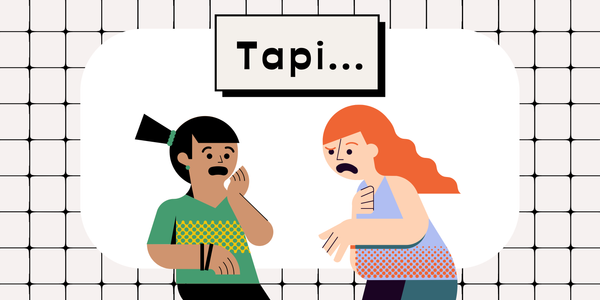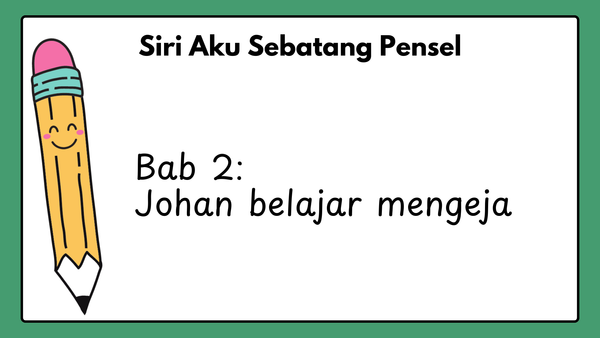Yang: connecting your clauses in Malay
Ready to make longer sentences in Bahasa Melayu? To do that, you need this versatile, and almost magical, conjunction: YANG.

Now that you know how to write basic sentences in Malay, let’s move on to making compound sentences. In this case, yang would be helpful to you in many ways. "How?" you ask. Read on, kawan!
What is yang?
Depending on the function, yang can be:
...that is...
...who is...
...which is...
...the one that...
...that...
...that/this (one)...
For example:
Wanita yang cantik itu isteri saya.
That woman who is pretty is my wife.
❗ Grammatically, yang is a conjunction that connects words, phrases, or clauses together.
➕ Extra linguistic information 🖱️🔽
More specifically, yang is a relative embedded conjunction (kata hubung pancangan relatif).
How to use yang in Malay?
There are four main functions of yang:
- To describe
- To refer
- To emphasise
- To explain
1️⃣ To describe
Alright, we’ll dive straight into some sentences that utilise this conjunction. To start off with something easy, read the following example:
📙 Buku yang tebal dan berat itu sangat berguna.
The book that is thick and heavy is very useful. 👍
➕ Extra linguistic information 🖱️🔽
🐔 Main clause: Buku itu sangat berguna. (That book is very useful.)
🐣 Subordinate clause: ...yang tebal dan berat... (...that is thick and heavy...)
The subordinate clause 🐣 is added to the main clause 🐔 to describe the book.
But how do I describe with yang?
From the example above, you can see that the description have adjectives:
🐣...yang + tebal dan berat...
#️⃣ tebal: thick
#️⃣ berat: heavy
When you are adding description of something or someone, just put yang with adjectives.
❗So, we can say that the first formula you need to remember is:
yang + adjective(s)
Here are more examples that fit this formula:
💙 Langit yang biru menenangkan saya.
: The sky that is blue calms me.
💙 Ryu pelajar yang rajin.
: Ryu is a student who is diligent.
💙 Saya membeli kereta baharu yang berwarna hijau.
: I bought a new car that is green in colour.
💙 Dia mencipta alat teknologi canggih yang berinovasi.
: He/she created a high-tech tool that is innovative.
💙 Dia mencipta alat yang canggih dan berinovasi.
He/she created a tool which is high-tech and innovative.
To describe something or someone, you can also use verbs after yang. For example:
❤️ Wanita yang tersenyum itu seorang pelukis yang terkenal.
: The woman who is smiling is a famous painter.
The verb is tersenyum (smiling).
❗So, the second formula to describe something or someone is:
yang + verb(s)
➕ Extra linguistic information 🖱️🔽
🐔 Main clause: Wanita itu seorang pelukis terkenal.
🐣 Subordinate clause: ...yang tersenyum...
#️⃣ Verb: tersenyum (smiling)
Here are some more sentences that use this formula:
❤️ Dia kawan baik saya yang saya kenal sejak kecil.
: He is my best friend whom I’ve known since little.
❤️ Mahsuri gemar makan nasi yang baru ditanak.
: Mahsuri loves eating rice that has just been cooked.
➕ Extra linguistic information 🖱️🔽
This function of yang is similar to relative pronouns in English.
2️⃣ To refer
Besides that, yang can also be used at the beginning of a sentence or phrase to refer to something or someone.
💚 Yang suka tidur itu saya.
: The one who loves sleeping is me.
💚 Yang mudah itu kadangkala membebankan.
: The things that are easy can sometimes be burdensome.
You also need to remember that yang is used to address and refer to people with a certain position or power. For example, judges are addressed as Yang Arif:
💚 Terima kasih, Yang Arif.
: Thank you, Your Honour.
In these examples, you can still apply the two formulas we learned. Just add adjectives or verbs to yang.
❗ But the most basic way to refer to an object is like this:
💚 Saya suka yang itu.
: I like that one.
➕ Extra linguistic information 🖱️🔽
In informal or casual Malay, it is normal to say "Saya suka itu/ini" but it is grammatically incorrect.
3️⃣ To emphasise
Yang can add emphasis to your sentence. For example:
⭐ Aku yang selalu kemas rumah!
: I am the one who always cleans the house! (as opposed to the other person)
⭐ Dia yang membuat silap, kenapa saya yang dimarah?
: He is the one who made the mistake, why am I the one being scolded?
You can remove yang in these sentences and still get the meaning across, but yang helps you make the listener understand your emotions better. This way, it would sound more natural in Malay. If you remove yang from these sentences, then they sound very plain.
🌙 Aku selalu kemas rumah!
: I always clean the house!
🌙 Dia membuat silap, kenapa saya dimarah?
: He made the mistake, why am I being scolded?
❗ If you want to refer to something AND emphasise it, here's how you do it:
⭐ Saya nak yang itu, bukan yang ini!
: I want that one, not this one!
4️⃣ To explain
When you speak informal or casual Malay, you can use yang to connect clauses and make an explanation. It is similar to that in English. For example:
🔴 Cikgu cakap yang kita kena pergi padang.
: The teacher said that we have to go to the (sports) field.
➕ Extra linguistic information 🖱️🔽
To make the above example sentence grammatically correct:
- just remove yang altogether
- or replace yang with bahawa.
That’s it for today. If you find this confusing, take it slow and feel free to make sentences using yang and we’ll help you check your work!
Read the next grammar explanation ➡️






